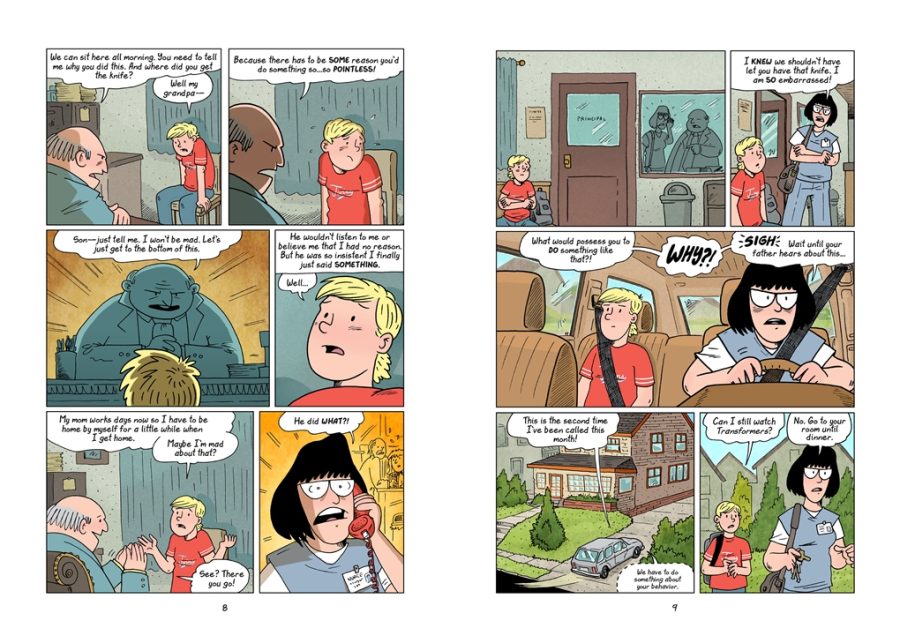A Review of Button Pusher by Tyler Page
March 2, 2023
I have a knack for noticing the subtle behaviors of my peers. I recognize the kid who smiles only at recess and the preteen who goofs off during the subjects he is not best at. But not all kids or adults catch onto these individuals’ behavior, and fewer know what to make of them. Button Pusher by Tyler Page urges readers to notice these behaviors and try to understand the underlying reasons for them.
The story begins by introducing readers to who Tyler Page is. He is a Minnesotan and has a younger brother, bickering parents, and friends who are big fans of his drawing skills. Then, there is his impulsivity, which after an incident on the bus has him sent to the principal’s office. It is not until after Tyler visits the pediatrician and attends group therapy sessions that he receives his Attention Deficit Hyperactive Disorder (ADHD) diagnosis.
The story then details the struggle of finding interventions for Tyler, his experience with medication as an aid, and the Page family dynamics. There is no sign Tyler has autonomy over his diagnosis until later in the story; after his parents’ tangling marriage comes to a head. Page writes, “I found myself thinking more about my family, and the doctor visits, and the pills I took. What was going on with me?”
In addition to the drawings on every page there are sections dedicated to actual medical forms and psychological terminology. Although the writing in these portions is technical, it is not written too expertly to turn people away from the book. They merely offer an educational perspective to those who are unfamiliar with an ADHD diagnosis and the biological impact of it.
Many audiences will enjoy this book because of the ease of the graphic novel format. However, this novel is not a fixed rulebook for coping with, living with, or caring for someone with ADHD. This story depicts one child’s life with ADHD, and how family and school are involved in the diagnostic process. Also, know this novel does not steer away from topics that might not be digestible for younger readers who are inclined to pick up a picture book.
Button Pusher recalls why some children and adults present the way they do. The novel is written without judgement, pushing that there is nothing wrong with those who are diagnosed with ADHD and take medication. Since this story is written from a multigenerational perspective there is space for every reader to relate to this book. I found the part of me that notices the individuality in my peers was comforted by this story, and those who pick up this book will feel seen in their own regard, too.








